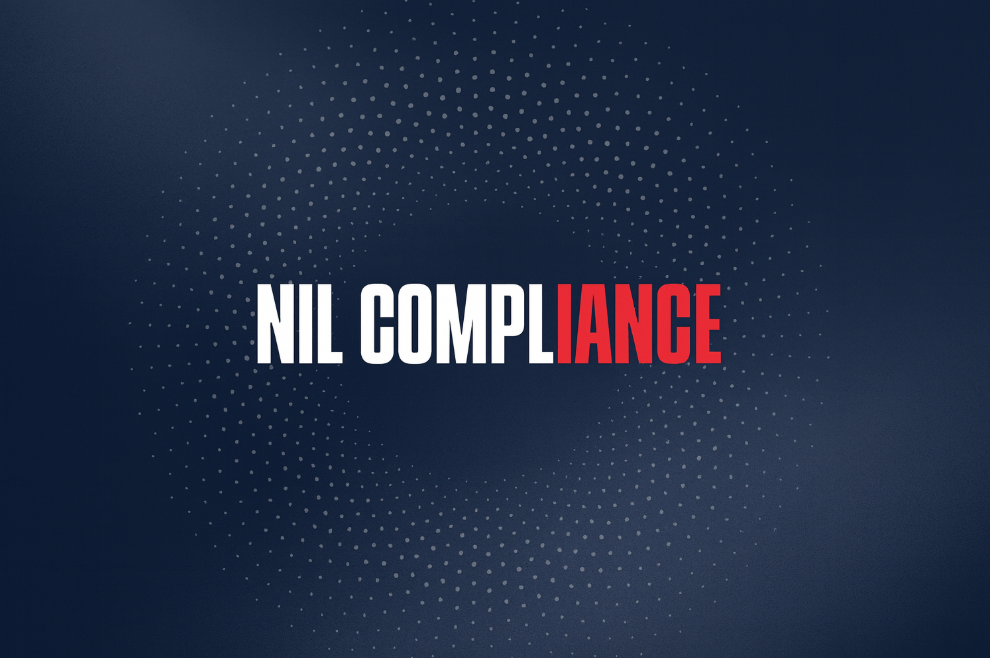NIL stands for name, image, and likeness and gives students legal control over commercial use of their persona. Since July 2021, NCAA interim guidance and state laws have let college athletes monetize NIL while schools may not pay directly.
Institutions must balance athlete rights with clear policies on disclosures, timing, and restricted categories like alcohol or gambling. Compliance teams face a state-by-state patchwork of rules that affects workflows across athletics, legal, finance, and communications.
Media attention and major brands create high-profile deals, but most athletes find value in local partnerships and social media campaigns. Schools can reduce risk by naming accountable owners, offering training, and requiring approvals that protect reputation and eligibility.
We preview a practical checklist to turn complex governance into daily operations. This section sets the stage so you can support athletes safely, uphold rights, and adapt to ongoing changes in college sports governance.
What Name, Image and Likeness Means for Colleges and Universities
We define the core concept so you can build consistent policy. The name, image, and likeness rights let student-athletes license their persona for endorsements, appearances, social content, autographs, and related compensation.
Defining rights for student-athletes
Athletes may sign deals that compensate promotional services. Schools cannot pay for on-field performance — compensation must reflect bona fide marketing value. Professional advisors like agents, attorneys, and tax experts are allowed and often essential.
Who sets the rules
Rules are layered: the NCAA’s interim policy defers to the law of the state where a school is located. In states without detailed statutes, universities set institutional policy. That patchwork of state laws means accurate jurisdiction mapping is critical for compliance.
Practical expectations
- Report prospective agreements to the school on required timelines.
- Many schools restrict use of school marks or require separate licensing.
- Certain categories—alcohol, tobacco, gambling—may be limited by school or state rules.
“Clear definitions and an accessible compliance hub make it easier for athletes to earn responsibly.”
The Legal Landscape Shaping Compliance
A shifting mix of state statutes, court decisions, and settlements now determines how colleges manage athlete endorsements and institutional risk. We map the major touchpoints that drive policy updates and day-to-day controls.
From California’s spark to a patchwork of rules
California’s SB-206 (2019) ignited change by allowing athletes to accept compensation for name, image, and likeness rights. That legislation prompted many states to adopt their own laws, creating non-uniform standards that universities must track.
Court signals: NCAA v. Alston
The Supreme Court in NCAA v. Alston limited broad amateurism defenses and opened antitrust scrutiny. Alston has pushed schools to reassess restrictions that could be challenged in court.
House v. NCAA and revenue sharing
In May 2024 the settlement in House v. NCAA introduced large-scale revenue sharing and a fair market value clearinghouse. Schools may now distribute up to $20.5M annually to athletes, and agreements must be documented for FMV review.
Variability, prohibited categories, and recruiting risk
States differ on disclosures, banned categories, and use of school marks. Many rules limit alcohol, tobacco, or gambling endorsements and restrict logos or facilities without licensing.
- Maintain a living matrix of state laws and institutional approvals.
- Separate permissible community deals from inducements that resemble pay-for-play.
- Anticipate Title IX and oversight questions when collectives fund agreements.
“Clear, current legal mapping prevents surprises and protects athletes, programs, and reputation.”
Clear, consistent terminology turns complex endorsement activity into enforceable policy across campus. We standardize how a college defines name, image, and likeness so students and staff read the same rules.
Definitions should map the phrase “use name” to real actions: autographs, social posts, appearances, merchandise, and licensing. That clarity makes it easier to spot when school marks or facilities trigger separate approvals.
Policies must list prohibited categories—such as alcohol, tobacco, and gambling—and link to the applicable state rules. Appendices with compliant and non-compliant examples help athletes and compliance officers interpret gray areas.
Disclosures should capture who, what, when, compensation, deliverables, and whether school IP or facilities are requested. Require signed notices for agents and attorneys with contact details to enable oversight.
We recommend cross-referencing team handbooks, publishing a style sheet for capitalization and definitions, and routing policy updates through formal change control so athletes and schools receive timely, versioned guidance.
NIL Compliance Checklist for Schools
A practical compliance checklist turns policy goals into repeatable tasks for campus teams and athletes.
Governance and ownership: We appoint a dedicated compliance lead and form a cross-functional committee with athletics, legal, finance, communications, and licensing. This group reviews deals, approves templates, and maintains escalation paths.
Policies aligned to state law: Publish school policies that define name, image, and likeness, set reporting timelines, list prohibited categories, and explain school IP rules. Ensure alignment with applicable state law and NCAA guidance.
Intake and tracking workflows: Centralize deal disclosure with a standard form capturing terms, deliverables, compensation, advisors, and use of marks or facilities. Use a dashboard to track status and retention.
Guardrails and education: Codify limits on alcohol, tobacco, gambling, conflicts with class or practice, and pay-for-play risks. Provide regular training on contracts, taxes, agents, and social media brand use.
| Control | Action | Frequency |
|---|---|---|
| Ownership | Appoint lead & committee | Annually |
| Policy updates | Publish versioned policies aligned to state law | Quarterly or as laws change |
| Deal intake | Standard form, centralized repository | Per agreement |
| FMV verification | Document comparables for each deal | Per agreement |
| Audit & training | Quarterly audits and athlete workshops | Quarterly |
Value verification and audits: Verify fair market value for every deal and keep comparables ready for FMV clearinghouse review under the House settlement. Conduct quarterly audits and keep signed acknowledgments from athletes.
“Standardized intake, clear ownership, and ongoing education reduce risk and help students earn responsibly.”
Governance, Reporting, and Fair Market Value Safeguards
Coordinated intake, FMV checks, and conflict screening make compliance predictable and defensible.
Disclosures to the school and conference: Centralize pre-signature reporting with deadlines aligned to state law and conference rules. Capture counterparties, term, compensation, deliverables, media use, and whether school marks or facilities are requested.
FMV methodologies and clearinghouse readiness: Use comparable deals, rate cards, engagement metrics, geography, and athlete profile to substantiate compensation. Keep valuation memos and evidence ready for the House v. NCAA clearinghouse.
Conflict management: Vet dates against class, exams, practice, travel, and media commitments. Prioritize academic integrity, athlete health, and team obligations. Escalate ambiguous cases to legal counsel.
- Advisor disclosure: Require agents and attorneys to be listed and provide a policy brief for external partners.
- Media rights: Confirm content approvals and platform rules to protect athlete privacy and school reputation.
- Exceptions: Document urgent approvals with thresholds and post-hoc review.
| Control | Requirement | Retention | Review |
|---|---|---|---|
| Deal intake | Pre-signature form with counterparty details | 7 years | Per agreement |
| FMV file | Comparables, rate cards, engagement proof | 7 years | Annually |
| Conflict checks | Schedule vetting and health clearance | Retention with agreement | Per term |
“Standardized disclosures and robust FMV files reduce risk and help athletes earn responsibly.”
Managing Collectives, Boosters, and Third-Party Relationships
Independent funding networks amplify brand opportunities for athletes while creating new compliance responsibilities for universities.
Collectives are independent groups that organize funding for athlete deals. The IRS treats them as separate from schools, so we require clear separation in MOUs and communications.
Structures, scope, and oversight
We define collectives as outside entities that provide financial support or coordination for athlete engagements. Each collective must sign a memorandum of understanding that outlines limits on recruiting contact and payment routing.
Preventing inducements and pay-for-play
All support must tie to documented services and deliverables. We prohibit payments that resemble recruiting inducements and enforce pre-approval of any appearance or endorsement deal.
Title IX risk and equitable distribution
Monitor aggregate distributions across teams and genders. Coordinate with equity officers to identify disparities and adjust guidance to comply with federal rules.
Vendors, agents, and marketplaces
Maintain an approved vendor list, require agent registration, and use a standard NIL rider that covers disclosures, IP, payment timing, and termination. Vendors must provide summary reports to support compliance tracking.
| Control | Requirement | Reporting |
|---|---|---|
| Collective MOU | Separation clause; no recruiting contact | Annually |
| Vendor approval | Due diligence and standard rider | Per vendor |
| Agent registration | Institutional rules acknowledgment | Per registration |
| Deal summaries | Aggregated reports for compliance | Quarterly |
“Clear boundaries and regular reporting let athletes engage with business partners while schools protect integrity and compliance.”
High School Athletes, Social Media, and Cross-Border Issues
High school athletes now face a patchwork of eligibility rules that differ by state association and court rulings.
High school eligibility and recent rulings
We advise families to confirm current rules before any agreement. Some states opened pathways early—Oregon allowed student deals in October 2022 and Missouri ties certain prep endorsements to in-state college commitments.
Brands and courts have tested limits: Nike signed Alyssa and Gisele Thompson, Jordan signed prep players, and an Ohio judge approved high school deals. An Adidas signing in 2025 shows the market continues to evolve.
Social media monetization and interstate compliance
Social media platforms drive many offers for young talent. When school athletes post sponsored content, document deliverables, secure platform rights, and confirm brand alignment suitable for minors.
Athletes who travel or change residency must check whether a nil deal stays compliant across states. Maintain signed contracts, a list of required disclosures, and a family or advisor file for transitions to college.
- Verify local nil laws and association rules before signing.
- Avoid using school logos or facilities without authorization.
- Keep time-managed plans so athletes make money without harming academics.
“Document every agreement and communicate with future college compliance offices to protect eligibility.”
Conclusion
Clear, enforceable closing steps make compliance practical for every campus team. Publish concise rules, run routine training, and keep workflows simple so college athletes and staff act with confidence.
Maintain a living list of state laws and evolving legislation. Retain disclosures, FMV valuations, and approvals for each deal that uses name, image, and likeness. These records protect rights and eligibility.
Promote equity across teams and run quarterly audits with annual policy reviews. Help athletes make informed choices by offering contract literacy, tax basics, and approved-vendor pathways.
By aligning athletics, legal, finance, licensing, and communications, colleges and universities can manage risk and unlock opportunities in college sports. Prepare now for new developments and keep public FAQs so everyone knows how to use name responsibly.
FAQ
What does “Name, Image and Likeness” mean for colleges and universities?
Name, image and likeness refers to a student-athlete’s rights to earn compensation for endorsements, social media posts, appearances, and other commercial uses of their persona. Colleges must balance athlete opportunities with institutional rules, conference policies, and applicable state law to avoid impermissible recruiting inducements or improper use of school marks.
Who sets the rules governing athlete compensation and institutional compliance?
Multiple sources shape the rules: federal and state statutes, state athletic association decisions, NCAA policies, and each institution’s published NIL policy. Schools must interpret and implement layered requirements while coordinating with conferences and legal counsel to remain compliant.
How do state laws affect a school’s compliance approach?
State laws vary on permitted activities, disclosure obligations, and age limits. Some states impose stricter reporting or ban certain inducements. Institutions must map differences across jurisdictions and update campus policies and athlete guidance accordingly.
What are the major legal developments that changed collegiate athlete compensation?
Key developments include California’s Fair Pay to Play Act, Supreme Court decisions like NCAA v. Alston that narrowed amateurism defenses, and settlements such as House v. NCAA that influenced revenue sharing and market structures. These cases and statutes forced broader institutional policy changes.
What categories of deals are commonly prohibited or restricted by schools?
Institutions typically restrict deals involving gambling, illicit substances, inappropriate adult products, or uses of school logos without authorization. Schools also guard against deals that function as recruiting inducements or conflict with team obligations and academic integrity.
What should a school’s NIL governance structure include?
Effective governance includes a designated compliance lead, a cross-functional committee (athletics, legal, compliance, admissions, financial aid), clear policies, standardized workflows for deal disclosure and approval, and regular training for staff and athletes.
How should schools manage disclosures and deal tracking?
Implement standardized disclosure forms, require timely submission of contract terms, capture key data fields for reporting, retain substantiation files, and maintain secure records for audits. Automated workflows and a central repository improve transparency and oversight.
What is fair market value (FMV) and how should institutions verify it?
FMV is a reasonable compensation benchmark for athlete services. Schools should require documentation supporting valuations—comparable market data, deliverable metrics, and third-party appraisals when needed—and record the rationale for each valuation.
How do collectives and booster groups affect compliance risk?
Collectives and boosters can provide substantial support but raise risks of impermissible recruiting inducements and Title IX disparities. Schools should require public governance documents from collectives, maintain separation from recruiting, and monitor benefit distributions to athletes.
What guidance should institutions give athletes about agents, contracts, and taxes?
Educate athletes on agent registration requirements, how to evaluate contract terms, tax reporting obligations, and potential effects on scholarships or financial aid. Provide access to vetted legal and tax resources and mandate disclosure of agent relationships.
How do social media activities factor into athlete-brand deals?
Social posts are commonly monetized. Athletes should follow platform policies, disclose sponsored content per FTC rules, avoid unauthorized use of school marks, and coordinate with compliance when deals intersect with team obligations or institutional branding.
Are high school athletes allowed to enter deals and how do rules differ?
Eligibility for high school athletes varies by state high school associations and recent court rulings. Some states permit limited activities while others bar compensation. Schools recruiting high school athletes must track local rules and advise recruits and families accordingly.
How should institutions prepare for federal or additional state regulation changes?
Maintain an agile policy framework, schedule periodic legal reviews, invest in compliance technology, and train staff on evolving standards. Proactive monitoring of legislation and case law lets schools update procedures and notify athletes promptly.
What steps should a school take to audit and monitor NIL activity?
Conduct regular internal audits of disclosed deals, verify FMV documentation, review social media posts for compliance, inspect collective interactions, and remediate noncompliant conduct through education or disciplinary measures where warranted.






Leave a Comment